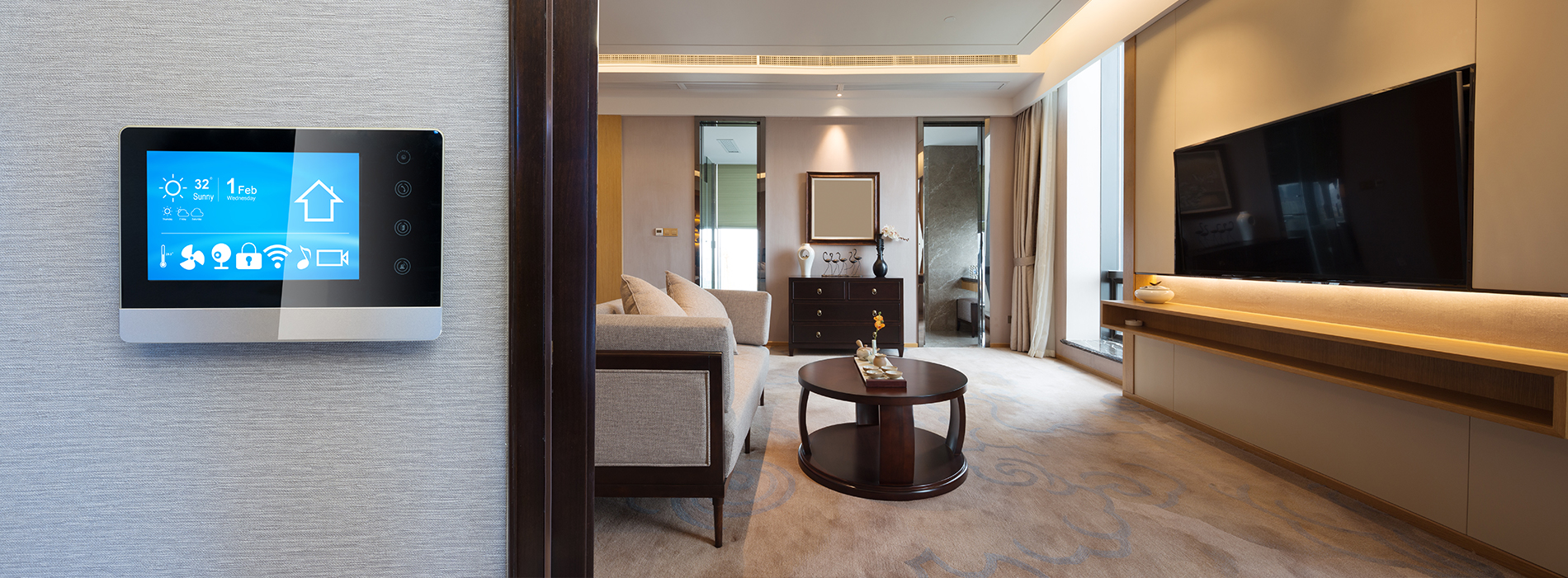Smart Home Energy Technologies Can Provide Greater Control of Consumption and Costs

As California advances toward its goal of 100% carbon-free electricity by 2045, there is a missing link between smart homes that provide automation with advanced energy devices, such as rooftop solar panels, electric cars and energy storage batteries, and today’s utility smart grid that allows for two-way communication between the utility and these customer technologies.
That link is the energy management system, the backbone of a smart grid. Energy management systems operate in sophisticated ways, resulting in reduced costs to the customer (businesses and homeowners) and the grid. Many commercial buildings already use automated and grid-connected, energy management systems, but the concept is relatively new for homes.
To test how homes might play a greater role in electrical distribution and grid management, a team of energy companies conducted a research study in San Diego Gas and Electric service territory with funding from the California Energy Commission. The Center for Sustainable Energy (CSE) provided the lead distributed energy resources data scientists on a team, led by Alternative Energy Systems Consulting, that included experts from the technology developer Itron, electric vehicle charging leader Oxygen Initiative, and the local utility San Diego Gas & Electric (SDG&E).
As part of the project, we determined that the very energy devices designed to help reduce consumption and lessen reliance on the power grid can exacerbate the difficulty of balancing power demands and grid operations. This occurs especially when people return to their homes in the early evenings and power demand peaks, just as solar generation drops as the sun goes down. It is no coincidence that this peak demand time is also when electrical power is the most expensive.
“A large part of the problem is that homes with solar, electric vehicles and energy storage typically operate without regard to grid impacts and can add to imbalances instead of helping during peak demand,” said Kristin Larson, CSE’s manager of distributed energy resources. “This project tested how a residential energy management system could be used to meet both the customer’s and the grid’s needs.”
The study involved recruiting 100 single-family residences that already had either a solar photovoltaic system or one or more electric vehicles (EVs)—or both—and installing a variety of technologies at each home such as battery storage, level II electric vehicle chargers, and smart thermostats. All participant homes received a residential energy management system. The installed technologies allowed homeowners greater control to shift and reduce their energy during peak demand times to reduce use of higher-priced grid power.
This was enabled by control and monitoring devices added to form a web-connected smart home with the residential energy resource management system that is capable of two-way communications with the electrical grid and controlling certain home energy devices.
The system was used to monitor solar generation and the fluctuating price of electricity rates throughout the day. Based on this information, the system controlled battery storage, EV charging, and thermostat temperature to respond to changes in pricing and to minimize customer costs.
Most of the study homes were on a time-of-use (TOU) electricity rate plan that bills based on both how much energy a home consumes and when the use occurs. Several TOU rates options exist for homeowners, but they may not currently provide optimal savings. Energy costs can be lowered by shifting a home’s energy load to times when rates are lower and demand is down.
Using a variety of existing and modified SDG&E retail utility rates, CSE researchers modeled the greatest and least energy cost-savings based on each study home’s electrical consumption, performance of its energy resources and electricity pricing.
They found that under current SDG&E rate structures, customers with large-capacity EV batteries (6-8 kilowatt-hours), large-sized energy storage batteries (8 kilowatt-hours or more) and daily commutes exceeding 30 miles, could save more than $1,100 a year on electricity costs and also have a positive impact on the grid. Those homeowners with smaller systems and shorter commutes can also recognize significant savings.
Additionally, CSE researchers analyzed hypothetical rates to see if they could further encourage residential customers to shift demand to periods of high renewable generation without increasing utility costs. They found TOU rates could be modified to achieve such results. It is important for utilities to continually evaluate TOU rates as more smart homes are integrated with the grid.
By analyzing the performance of such energy systems and their effectiveness to reduce energy use and costs when combined with various TOU utility rate structures, the researchers hope to increase consumer benefits and assist the grid in integrating more renewable energy into the state’s energy mix.
To achieve 100% carbon-free electricity by 2045, California must build out more solar and wind generation, but the intermittent nature of sunlight and winds makes meeting energy demands very challenging. If distributed energy systems and advanced controls were installed in millions of homes throughout California, it would contribute significantly to overall grid reliability and help meet the state’s renewable energy goals, according to Larson.
“California’s renewable energy capacity will continue to grow over the next several decades to reach the state’s clean energy and greenhouse gas emissions reduction goals,” Larson said. “Identifying and implementing new technologies as well as electricity rate plans and other market mechanisms that incentivize customers to shift loads to periods of higher renewable generation will help support integration of more renewable energy onto the grid and decrease our reliance on fossil-fueled resources.”
This smart home study was funded by the California Public Utilities Commission’s Electric Program Investment Charge program. To learn more, view the full project report on analyzed hypothetical rates, read our overview of The Smart Home Study, or download the final tariff analysis report for insights on our evaluation of this technology and its potential benefits on customer and grid impacts.

